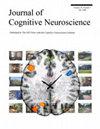Early Rise and Persistent Inhibition of Electromyography during Failed Stopping
IF 3.1
3区 医学
Q2 NEUROSCIENCES
引用次数: 0
Abstract
Reactively canceling movements is a vital feature of the motor system to ensure safety. This behavior can be studied in the laboratory using the stop-signal task. There remains ambiguity about whether a “point-of-no-return” exists, after which a response cannot be aborted. A separate question concerns whether motor system inhibition associated with attempted stopping persists when stopping is unsuccessful. We address these two questions using electromyography (EMG) in two stop-signal task experiments. Experiment 1 (n = 24) involved simple right and left index finger responses in separate task blocks. Experiment 2 (n = 28) involved a response choice between the right index and pinky fingers. To evaluate the approximate point of no return, we measured EMG in responding fingers during the 100 msec preceding the stop signal and observed significantly greater EMG amplitudes during failed than successful stopping in both experiments. Thus, EMG before the stop signal differentiated success, regardless of whether there was a response choice. To address whether motor inhibition persists after failed stopping, we assessed EMG peak-to-offset durations and slopes (i.e., rate of EMG decline) for go, failed stop, and successful stop (partial response) trials. EMG peak-to-offset was shorter and steeper for failed stopping compared to go and successful stop partial response trials, suggesting motor inhibition persists even when failing to stop. These findings indicate EMG is sensitive to a “transition zone” at which the relative likelihood of stop failure versus success inverts and also suggest peak-to-offset time of response-related EMG activity during failed stopping reflects stopping-related inhibition.停车失败时肌电图的早起和持续抑制
反应性取消动作是运动系统确保安全的一个重要特征。这种行为可以通过停止信号任务在实验室中进行研究。关于是否存在一个 "不归点",即在该点之后不能终止反应,目前仍存在模糊不清的地方。另一个问题是,当停止不成功时,与试图停止有关的运动系统抑制是否会持续存在。我们在两个停止信号任务实验中使用肌电图(EMG)来解决这两个问题。实验 1(n = 24)涉及在不同任务块中简单的左右食指反应。实验 2(n = 28)涉及右手食指和小指之间的反应选择。为了评估 "不归点 "的大致位置,我们测量了停止信号发出前 100 毫秒内做出反应的手指的肌电图。因此,无论是否有反应选择,停止信号前的肌电图都能区分成功与否。为了解决停止失败后运动抑制是否持续的问题,我们评估了前进、停止失败和成功停止(部分反应)试验的肌电图峰值到峰值的持续时间和斜率(即肌电图下降率)。与前进和成功停止部分反应试验相比,停止失败的 EMG 峰值到峰值的持续时间更短,斜率更大,这表明即使停止失败,运动抑制仍然存在。这些研究结果表明,EMG 对 "过渡区 "很敏感,在这个过渡区,停止失败与成功的相对可能性发生了逆转,同时还表明,在停止失败时,与反应相关的 EMG 活动的峰值到偏移时间反映了与停止相关的抑制。
本文章由计算机程序翻译,如有差异,请以英文原文为准。
求助全文
约1分钟内获得全文
求助全文
来源期刊
CiteScore
5.30
自引率
3.10%
发文量
151
审稿时长
3-8 weeks
期刊介绍:
Journal of Cognitive Neuroscience investigates brain–behavior interaction and promotes lively interchange among the mind sciences.

 求助内容:
求助内容: 应助结果提醒方式:
应助结果提醒方式:


